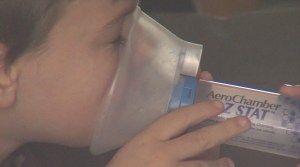SACRAMENTO-
Throughout California, there have been 800 new cases of whooping cough reported in the last two weeks.
According to the California Department of Public Health (CDPH), the number of cases in the state has reached epidemic proportions. As of June 10th, there have been 3,458 cases of the illness reported to CDPH, according to the department’s director, Dr. Ron Chapman. There have been more reports of whooping cough within the past 6 months than there were in all of 2013.
 Whooping cough is cyclical, and it peaks every 3-5 years. The last peak in California happened in 2010, so the current outbreak makes a lot of sense. “Preventing severe disease and death in infants is our highest priority,” said Dr. Chapman. “We urge all pregnant women to get vaccinated. We also urge parents to vaccinate infants as soon as possible.” Infants too young to be fully immunized are the most vulnerable to the illness, and 2 out of every 3 whooping cough hospitalizations have been in children four months or younger. Two infant deaths have been reported.
Whooping cough is cyclical, and it peaks every 3-5 years. The last peak in California happened in 2010, so the current outbreak makes a lot of sense. “Preventing severe disease and death in infants is our highest priority,” said Dr. Chapman. “We urge all pregnant women to get vaccinated. We also urge parents to vaccinate infants as soon as possible.” Infants too young to be fully immunized are the most vulnerable to the illness, and 2 out of every 3 whooping cough hospitalizations have been in children four months or younger. Two infant deaths have been reported.
The Tdap vaccination for pregnant women is the best way to protect infants who are too young to be vaccinated, and CDPH says all pregnant women should be vaccinated with Tdap in the third trimester of each pregnancy, regardless of previous Tdap vaccination. In addition, infants should be vaccinated as soon as possible, as well as people who will be around newborns.
“Unlike some other vaccine-preventable diseases, like measles, neither vaccination nor illness from whooping cough offers lifetime immunity,” says Dr. Ron Chapman. “However, vaccination is still the best defense against this potentially fatal disease.”
The symptoms of whooping cough vary by age. For children, a typical case starts with a cough and runny nose for one to two weeks. The cough then worsens and children may have rapid coughing spells that end with a “whooping” sound. Young infants may not have typical symptoms and may have no apparent cough. Parents may describe episodes in which the infant’s face turns red or purple. For adults, the disease may simply cause the person to cough for several weeks.
Greg Cotta filed this report.
